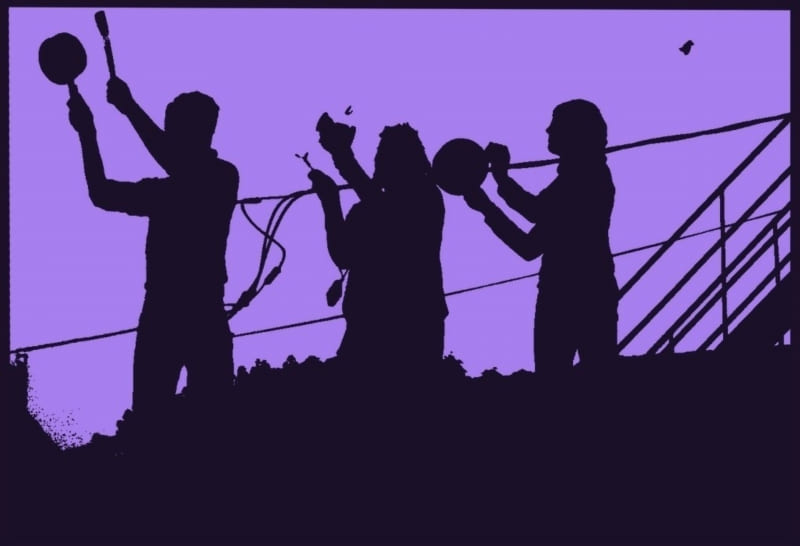Montreal, 2012. The streets resonated with the sound of clanging pots and pans. This wasn’t just a mere gathering but a distinctive form of protest. Called the “Casserole Protest,” Quebecers took to the streets to make their voices heard, literally.
The Origins of the Casserole Protest
Why Pots and Pans?
The use of pots and pans as instruments of protest isn’t a new concept. Historically, this form of protest—known as “cacerolazo” in Spanish—originated in Chile during the 1970s. People, mostly women, would bang on pots and pans to express their displeasure with the government, all from the safety of their homes. It became a symbolic, yet powerful, means to voice one’s dissent without the need for violence or confrontation.
In Montreal, this form of protest was adopted as a creative and non-violent way to express disagreement with a controversial bill. But how did it all start?
The Spark: Controversial Bill 78
In the spring of 2012, the Quebec government passed Bill 78—a law many felt restricted their right to protest. The bill, touted as a response to ongoing student protests, required demonstrators to notify the police of any gathering of 50 or more people, 8 hours in advance. This didn’t sit well with many, especially students who saw it as a direct infringement on their rights.
But it wasn’t just the students who felt this way. Many citizens saw the bill as a threat to their democratic rights. And thus, the casserole protests in Montreal began.
Making Noise: The Heart of the Casserole Protests

Imagine the scene: families, students, and even the elderly, stepping out onto their balconies or into the streets, armed with their kitchenware. The cacophony of clanging pans, symbolic of their collective dissent, echoed throughout Montreal.
Unity in Diversity
What was astonishing was the sheer diversity of the crowd. From college students worried about their future to grandparents concerned for the next generation, the protests bridged generational gaps. This unity showcased the power of community and how, when banded together, people can make an impact.
The Global Echo
The noise didn’t just stay within the confines of Montreal. Thanks to social media and the global news, the casserole protest gained international attention. Support poured in from around the world. Websites, like Wikipedia, have a detailed account of this unique form of protest.
Click here to delve deeper into the global history of casserole protests on Wikipedia.
The Impact: Did Montreal Listen?

The cacophony was hard to ignore. The Quebec government surely felt the pressure. With international eyes watching, the casserole protest was more than just a local issue; it became a symbol of democratic rights worldwide.
Reactions and Responses
The city had mixed reactions. While some saw the protests as a necessary form of dissent, others considered them a disturbance. Debates and discussions, both online and offline, swirled around the true impact of these protests.
However, one thing was clear: people were talking. Whether you were for or against the bill, the casserole protest got people discussing the importance of democratic rights and the lengths people would go to protect them.
Casserole Protests: More than Just Noise
While the din of the clanging might have died down, the message remains loud and clear. The 2012 casserole protests in Montreal were more than just a noisy spectacle; they were a testament to the spirit of the city’s residents and their unwavering commitment to democratic rights.
Symbols and Stories
Every clang told a story. Behind every pot and pan was an individual with concerns, hopes, and dreams. These weren’t just instruments of noise; they were symbols of resistance.
Legacy for the Future
These protests have left an indelible mark on Montreal’s history. They serve as a reminder of the power of peaceful protest and the importance of standing up for one’s beliefs. Future generations will look back at these protests as a defining moment, a testament to the spirit of resilience.
Montreal’s Casserole Protests in Popular Culture
The cultural impact of the casserole protests was profound. Artists, musicians, and filmmakers drew inspiration from these events, weaving them into their works, ensuring that the story of the pots and pans would be told for generations to come.
Music and Melodies
Local musicians composed songs inspired by the rhythmic clangs of the casseroles. These tunes became anthems for many, encapsulating the spirit and energy of the protests.
Literature and Film
Writers penned stories, and filmmakers captured the essence of the protests on screen. These artistic renditions served as a powerful means of documenting history and ensuring the legacy







